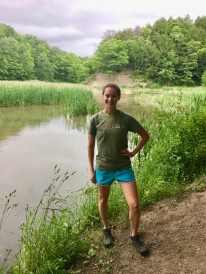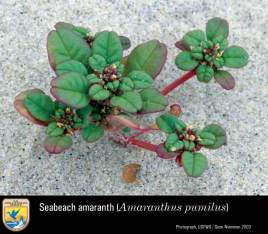Today we’re hearing a great story from guest blogger, Larry Miller, the Hatchery Manager at Allegheny National Fish Hatchery in Warren, Pennsylvania.
Volunteer Vacation, or voluntourism, is becoming an attractive way to travel around the globe for those looking to get away, make an impact, take a career break, or investigate a new career path. Voluntourism is a great way to see and become immersed in a new town or country, and offers a unique opportunity to have fun, while giving your trip a sense of purpose. Recently, we welcomed a son and his father a vacation together volunteering at the Allegheny National Fish Hatchery. Not only did the men provide valuable assistance to the hatchery, they got to spend quality time together and fish the Allegheny River.
Craig Gaviglia is a student at Slippery Rock University in Pennsylvania studying environmental science with an interest in natural resource management. Dave Gaviglia, Craig’s dad, works for an engineering firm as an environmental consultant working on investigating groundwater contamination and its clean-up. Craig wanted to gain some experience in the natural resources field so together we worked out a plan for Craig to volunteer at the hatchery for a week. Craig’s dad, Dave, thought this sounded like a neat idea, so he decided to accompany Craig for a father-son adventure and also volunteer for the week.

Photo by Dace Gaviglia
Craig and Dave spent their week feeding fish, cleaning raceways, and conducting fish inventories of growth and survival. Craig’s most memorable task was adipose fin clipping the bloaters,a native prey fish being restored to Lake Ontario to help restore lake trout and land-locked Atlantic salmon. Fin clipping helps biologists in the Service, State, and Canadian natural resource agencies identify the hatchery-stocked bloaters and evaluate the success of bloater restoration efforts.
Craig told staff “This was a great experience. I really enjoyed meeting and getting to know the staff and I gained a greater appreciation for the fish restoration work occurring at the hatchery.” Indeed, the work seemed right up Craig’s alley. He said “It’s almost like a hobby, not a job,” much like the adage by Mark Twain “Find a job you enjoy doing, and you will never have to work a day in your life.”
As for his favorite part of the experience Dave said “I enjoyed working side by side with my son. I also enjoyed learning about the hatchery and how meticulous the work can be caring for the fish. I would do it again if given the chance.”
It was certainly not all work and no play for Craig and Dave. Both are avid angling enthusiasts and plied the waters of the Allegheny River and its tributaries in the Kinzua Dam area. Craig caught a nice brown trout and a palomino trout in some feeder streams to the Allegheny, and he also caught a nice rainbow trout just downstream of the hatchery on the Allegheny River.
Click here to learn more about the Allegheny National Fish Hatchery.























